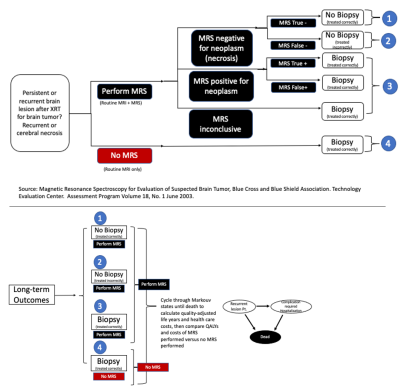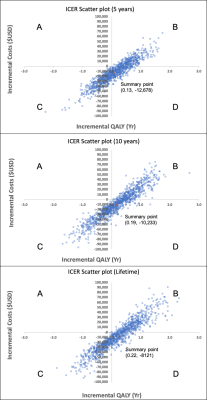Huijun Liao1, So Wing Lum1, and Alexander P. Lin1
1Center for Clinical Spectroscopy, Brigham and Women's Hospital, Boston, MA, United States
1Center for Clinical Spectroscopy, Brigham and Women's Hospital, Boston, MA, United States
We describe a cost-effectiveness analysis of MRS using a decision-analytic model showed that performing MRS was more cost-effective compared with not performing MRS for recurrent glioma and necrosis differentiation. MRS should be considered reimbursable in the U.S. by policy makers.

Figure 1. Simplified schematic of decision-analytic model. The model was developed based on the clinical scenario where patients had undergone prior treatment for a brain tumor and now have new or persistent brain findings on imaging that are suspicious for recurrent tumor or cerebral necrosis5. It compared the methods of performing-MRS with not-performing-MRS where patient would go straight to biopsy.

Figure 2. Scatter plots of probabilistic sensitivity analysis for MRS vs No MRS for time horizon of 5yr, 10yr, and lifetime. Quadrant A: MRS performed is less effective and more expensive; Quadrant B: MRS performed is more effective and more expensive; Quadrant C: MRS performed is less effective and less expensive; Quadrant D: MRS performed is more effective and less expensive. The summary point (in orange) shows the average incremental cost and incremental QALY of that plot.
